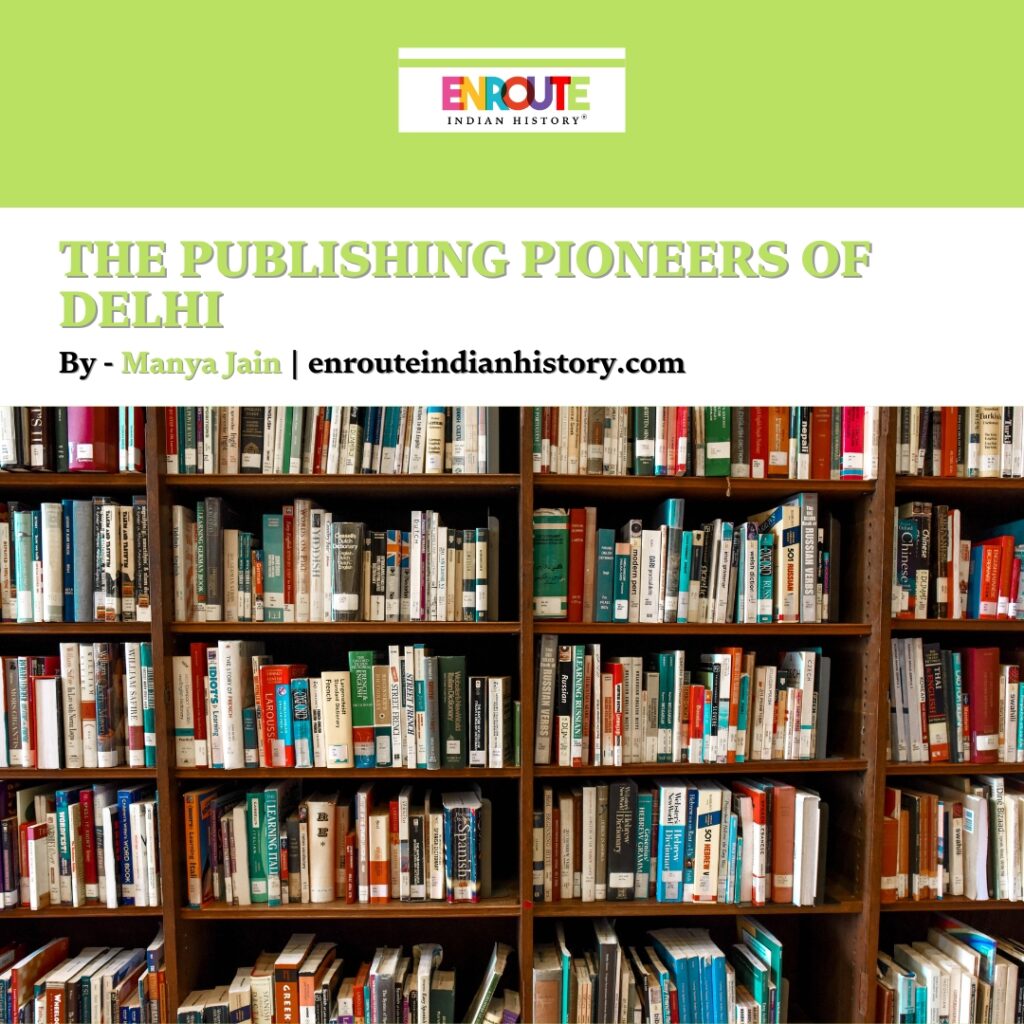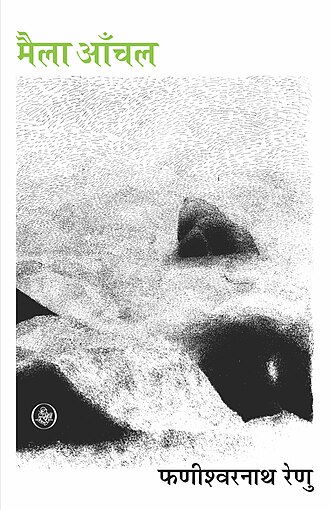Delhi Publishing Houses History, Old Publishing Houses Delhi, Family History of Delhi Publishers
- enrouteI
- September 5, 2024

The Birth of Publishing in Delhi
The story of publishing in Delhi traces its roots back to the early 20th century, a period when the city was on the cusp of significant transformation. At that time, Delhi was not the political and cultural capital it is today, but it was already beginning to emerge as a hub for intellectual and cultural activity. With the consolidation of British colonial rule in India, there was a growing demand for literature, academic materials, and scholarly works in multiple languages, including English, Hindi, Urdu, and other regional languages. This demand laid the foundation for the city’s emergence as a key center for publishing.
Delhi’s strategic location at the crossroads of various cultural and trade routes, coupled with its growing intellectual community, made it an ideal place for the publishing industry to flourish. The early decades of the 20th century saw the rise of several publishing houses that catered to the diverse linguistic and cultural needs of India’s population. These publishing houses were instrumental in disseminating literature and educational content, fostering a reading culture, and shaping the intellectual landscape of the country.
One of the pioneering publishing houses to establish its roots in Delhi was S. Chand & Company, founded in 1939 by Lala Shyam Lal Gupta. Initially starting as a bookshop in the bustling lanes of Daryaganj, a historic neighborhood known for its book markets and literary activities, S. Chand & Company quickly recognized the immense potential for growth in educational publishing. Recognizing the need for quality educational content, S. Chand expanded from retail into publishing, focusing on school and college textbooks.Chand’s expansion into publishing proved to be a turning point not only for the company but also for the educational landscape of India. The publishing house’s textbooks became immensely popular across India due to their accessibility, affordability, and quality content. By providing essential educational materials that were both reliable and comprehensive, S. Chand played a critical role in making education more accessible to millions of students across the country. Their books covered a wide range of subjects, from science and mathematics to humanities and commerce, catering to the needs of students at different levels of education.
The company’s success can be attributed to its ability to identify and meet the evolving educational needs of India’s growing student population. During the post-independence period, as India focused on nation-building and educational reform, the demand for standardized textbooks and learning materials soared. S. Chand rose to the challenge, becoming a trusted name in the education sector. The publishing house’s commitment to quality and its deep understanding of the Indian education system allowed it to play a significant role in shaping the country’s future by equipping generations of students with the knowledge and skills they needed to succeed.
By the mid-20th century, S. Chand & Company had firmly established itself as a leader in the field of educational publishing in India. The company’s growth mirrored the development of Delhi as a center of learning and intellectual exchange. S. Chand’s success story is a testament to how a small bookshop in Daryaganj grew into a publishing powerhouse that has left a lasting impact on India’s education system.
The success of S. Chand paved the way for other publishing houses to flourish in Delhi, contributing to the city’s reputation as a major hub for publishing in India. Over the years, Delhi has continued to attract publishers and authors from across the country and the world, solidifying its position as a central player in the global publishing industry. Today, the city is home to a vibrant and diverse publishing community that continues to shape India’s literary and educational landscape.

(Source- https://blog.leveragedgrowth.in/s-chand-company-limited/; S. Chand Publishing Showroom, Daryaganj)
Contributions of Family-Owned Publishing Houses
Several family-owned publishing houses emerged during this period, each contributing uniquely to the landscape of Indian literature. Motilal Banarsidass, originally founded in Lahore in 1903 by Motilal Jain, moved to Delhi after the partition of India in 1947. This publishing house became renowned for its specialized focus on books related to Indology, Sanskrit, philosophy, and religion. Today, it is one of the world’s largest publishers of books on ancient Indian philosophy, culture, and history, keeping alive the rich heritage of Indian thought. Some notable works published by Motilal Banarsidass include “The Arthashastra” by Kautilya, translated by R. Shamasastry, and “Yoga Sutras of Patanjali,” which have become fundamental texts in the study of ancient Indian philosophy and practices.
Another notable name is Rajkamal Prakashan, founded by Om Prakash in 1947, which became one of the leading publishers of Hindi literature. Rajkamal Prakashan was instrumental in bringing to light some of the most celebrated works of Hindi literature, publishing works by notable authors like Phanishwar Nath ‘Renu,’ Mohan Rakesh, and Harivansh Rai Bachchan. By promoting indigenous literature, the publishing house contributed significantly to the growth of modern Hindi prose and poetry, shaping the post-independence literary culture in India. Some of their significant publications include Renu’s “Maila Anchal,” Rakesh’s “Aashadh Ka Ek Din,” and Bachchan’s “Madhushala.” These works have left an indelible impact on modern Hindi prose and poetry, capturing the essence of post-independence India.

(Source- https://www.adorebooks.in/product/maila-aanchal/)
Among the pioneering names that have shaped the Indian publishing landscape is Rupa Publications, founded in 1936 by D. Mehra in Calcutta. The story began when K. Jackson Marshall, a Scottish gentleman selling books in New Market, Calcutta, was impressed by Mehra’s sales pitch while he was selling hosiery. Marshall asked him to join in selling books, and thus, with meager capital and his home doubling as his office, Mehra started the new enterprise named “Rupa,” which means “silver.” Rupa’s logo, designed by Satyajit Ray, was created in exchange for a few good books to read. As a result of World War II and the consequent instability in Calcutta, the Rupa family shifted to the then political capital of India—Allahabad (now Prayagraj) in 1939, even sneaking books to freedom fighters in jail. Post-Independence, Rupa expanded to Bombay (now Mumbai) in 1951, marking its presence in the commercial capital of the newly independent country. In the 1960s, Rupa ventured into publishing, starting with two slim volumes of Bengali poetry and later publishing Hermann Hesse’s Siddhartha. Rupa also made significant contributions to sports publishing, bringing out biographies and memoirs of cricket legends like Sunil Gavaskar, Sachin Tendulkar, and Rahul Dravid. Its extensive catalog today includes diverse genres, from cookbooks to political memoirs, showcasing its evolution as a versatile publishing house. In 2011, Rupa co-founded Aleph Book Company with David Davidar, expanding further into literary publishing.
The Rise of Academic and Scholarly Publishing
As India grew and developed, there was a rising demand for academic and scholarly works. Delhi, with its many universities and research institutions, became a key center for academic publishing. Oxford University Press (OUP), originally established in Calcutta, moved to Delhi in 1949. It has since played a major role in the development of academic literature in India, providing high-quality textbooks and scholarly works that cater to a broad spectrum of subjects. Similarly, Orient Blackswan, established in 1948, emerged as a significant player in the academic publishing arena, known for its strong focus on educational, professional, and general books.
The spirit of Delhi’s publishing pioneers also extends to its iconic booksellers, who have served as essential intermediaries between the publishers and readers. Daryaganj Sunday Book Market, one of the most famous book markets in India, has been a key destination for book lovers for decades. While not a publisher itself, the market has played a significant role in making both new and rare publications accessible to the public, thus fostering a robust reading culture in Delhi. Galgotia Publications, established in 1933 by Om Prakash Galgotia, started as a small bookshop and expanded into one of the leading publishers and booksellers in Delhi, catering to academic and competitive exam needs. Over the decades, Galgotia’s has continued to innovate, becoming a trusted name in educational publishing in India.
As the publishing industry has evolved, so too have the pioneering publishers of Delhi. The advent of digital technology has brought about significant changes, prompting these traditional publishers to adapt to new trends such as digital publishing, e-books, and online distribution. Katha, founded by Geeta Dharmarajan in 1988, is one of the more modern publishing houses that have embraced digital platforms while continuing to focus on Indian literature, translation, and storytelling for children. Katha’s efforts in promoting translations of regional literature into English have been pivotal in bringing the diverse voices of India to a global audience. Permanent Black, founded in 2000 by Rukun Advani, is another modern-day publishing house based in Delhi that focuses on scholarly and literary non-fiction. By publishing works from some of the most respected scholars in the field of Indian history and culture, Permanent Black has helped foster a deeper understanding of India’s intellectual heritage.
Delhi’s publishing story is not just about books and texts; it’s about a city’s heart and soul, captured in its written words and shared with the world.
Sources
https://rupapublications.co.in/about-us/#:~:text=The%20new%20enterprise%20named%20’Rupa,’
https://en.wikipedia.org/wiki/Motilal_Banarsidass
https://www.publishersglobal.com/directory/india/publishers-of-new-delhi
https://global.oup.com/about/oup_history/?cc=in
https://schandgroup.com/the-group/
https://www.hindustantimes.com/lifestyle/art-culture/a-long-shelf-life-how-a-book-stall-in-a-market-became-rupa-publishers-101707491814624.html
- Delhi Literary Heritage
- Delhi Publishing Houses History
- Delhi Publishing Industry Heritage
- Delhi Publishing Pioneers
- Delhi’s Literary Publishing History
- Family History of Delhi Publishers
- Founders of Delhi Publishing Houses
- Historic Publishers Delhi
- Legacy of Delhi Publishing Houses
- Old Publishing Houses Delhi




















